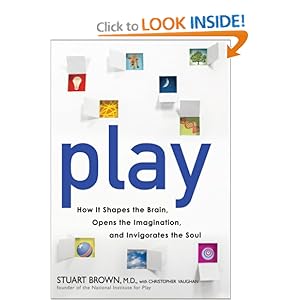Excel is the spreadsheet application included in the Microsoft Office suite of programs (which includes Word, PowerPoint, and other applications. It was originally released for Mac in 1985 and for Windows in 1987.
Google Docs is comparable to Microsoft Office – except that it is an online application. Docs has applications for documents, spreadsheets, presentations, drawings, and forms. Google Spreadsheet is not quite as full-featured as a software-based application, but still has a large collection of functions and basic charting capabilities. By the way, did I mention that it is FREE?
Monday, January 31, 2011
Thursday, January 27, 2011
Model for Improvement
Authors Langley and Nolan developed a quality improvement model titled the "Model for Improvement." As with most quality improvement models, the framework appears to be simple but implementation and follow-through require commitment to achieve improvement goals. The model consists of three questions:
- What are you trying to accomplish? The answer to this question should result in a written "aim" statement that will serve as a goal for the improvement process. It is should specific and achievable. If your goal is to lose weight, the specific aim statement might be, "Lose 25 pounds by May 1."
- How will we know that a change is an improvement? If you were happy yesterday and happy today, how can you quantify the difference? Any type of change can only be assessed by establishing measurement criteria. The measurement for the weight loss aim might be number of pounds gained/lost per week. You might also count the calories consumed or the number of servings of vegetables.
- What change can we make that will result in improvement? Only by looking at the activities in your life can you select elements that can be changed. In future blog posts I will discuss cause/effect diagrams and process charts to help select critical points where change would have the most impact.
Monday, January 24, 2011
Future Casting
Timeline. On a blank sheet of paper, draw a horizontal line. This line represents your life. On the left write your date of birth. Since you don't know when you will leave this life, write question marks on the right edge of the line. Place an arrow where you believe that you are now on this time line (it's permissible to be optimistic).
From this point backwards, towards your birth, represents time that has passed - whatever events, actions, and mishaps have occurred cannot be relived or undone. All we can do is learn from mistakes and enjoy the memories from happy times. Draw an arrow towards the left and label it "past."
From your current position on the time line forward towards the questions marks, you have an unbounded opportunity for your future. Draw an arrow pointing to the right and label it "future opportunity."
Your Past Self. Underneath the timeline, write an introduction for yourself as you were ten years ago. Write your introduction in the present tense. My introduction might look like, "My name is Doug Pratt and I am a psychological examiner working for a large medical center. I play the piano and volunteer at church."
Your Future Self. Now, write the same type of introduction from the standpoint of ten years in the future. This doesn't have to be a realistic description of the result of your current path (career, personal, etc.) but should be the dream of what you want to be doing in ten years. My future self introduction might be, "My name is Doug Pratt and I enjoy traveling around the USA and world sharing information on personal change. My daughter is in college and my wife travels with me whenever she can."
You have now created a written document that describes your ideal future - a future you created. You can utilize this information to help guide your life decisions towards your future.
Thursday, January 20, 2011
Effective Presentation from WhiteHouse.gov
The video below, taken from WhiteHouse.gov demonstrates an effective use of hand-drawn, simple visuals. Play video below or Click to view on iPhone
Monday, January 17, 2011
Play
play: How It Shapes the Brain, Opens the Imagination, & Invigorates the Soul is a book written by Stuart Brown, a medical doctor, psychiatrist, clinical researcher, and founder of the National Institute for Play. I first saw Dr. Brown at the TED.com website, a site that features inspirational talks on a variety of topics under the general headings of technology, education, and design (hence T.E.D.). Play is divided into two sections: why play? and living the playful life.
Dr. Brown defines play as “an absorbing, apparently purposeless activity that provides enjoyment and a suspension of self-consciousness and sense of time.” Play is a behavior observed throughout the animal kingdom. Animals use play to learn new skills and to test the limits of their societies. As Dr. Brown notes, we, as humans, are the same.
To illustrate the importance of play, one story is about a company whose leaders observed that younger scientists were unable to demonstrate the same level of creative problem solving that their older peers displayed. Interviews with all of the scientists revealed that the older, more creative scientists had explored their world through play, in the form of manipulating objects with their hands, as children.
As Dr. Brown walks us the through the importance of play in parenting, work, relationships, and in the world at large, the overall theme is clearly that we should adopt an attitude of play in all aspects of living. An attitude of plays leads to better work performance, personal relationships at a richer and deeper level, and more well-rounded children and students.
When is the last time you played at work? How did this improve your productivity or effectiveness?
Subscribe to:
Posts (Atom)


